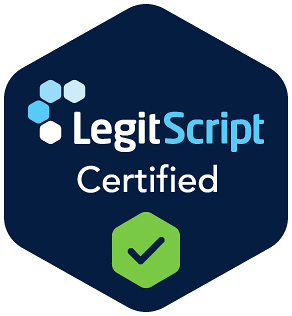Prescription opioid addiction can affect people from all walks of life. Whether the addiction began with a legitimate prescription for pain relief or developed through recreational use, the road to recovery starts with a supportive, comprehensive treatment program. Understanding what happens during a prescription opioids rehab program can help ease anxiety and set clear expectations for the journey ahead.
These programs are designed to help individuals overcome physical dependence, address emotional and psychological challenges, and build the tools needed for lasting recovery. Knowing what to expect allows people and their loved ones to prepare mentally, emotionally, and logistically for the process.
Initial Assessment and Intake Process
The first step in entering a prescription opioids rehab program is the intake assessment. This is a thorough evaluation conducted by medical professionals, addiction specialists, or mental health clinicians. During this process, individuals answer questions about their substance use history, physical health, mental health, family background, and lifestyle.
This assessment helps the treatment team create a personalized recovery plan. It also determines whether inpatient or outpatient care is most appropriate based on the severity of the addiction and other factors such as co-occurring disorders or living environment.
The intake phase may also include medical tests to evaluate physical health, including liver function, blood pressure, or the presence of other substances in the system.
Medical Detoxification
For many people addicted to prescription opioids, detox is the next critical phase of treatment. Detox involves gradually clearing opioids from the body while managing withdrawal symptoms in a safe, controlled setting. This can take place in a standalone detox center, within a residential rehab facility, or on an outpatient basis, depending on the level of support needed.
Withdrawal from opioids can be physically and emotionally difficult. Common symptoms include muscle aches, anxiety, insomnia, nausea, sweating, and strong cravings. In medically supervised detox programs, doctors may use medications like buprenorphine or methadone to ease symptoms and reduce the risk of complications.
Medical detox is not a cure on its own, but it provides a stable foundation for the rest of the treatment process.
Individual and Group Therapy
Once detox is complete, the focus shifts to therapy and counseling. Therapy is a cornerstone of opioid rehab because it addresses the underlying issues that contribute to addiction. These might include past trauma, mental health disorders, relationship challenges, or chronic pain.
Most programs offer a combination of individual and group therapy. Individual therapy sessions provide a private space to work with a licensed counselor on personal goals, emotional healing, and relapse prevention strategies. Group therapy offers the chance to connect with others who are facing similar struggles, share experiences, and build a sense of community.
Therapeutic approaches often include cognitive-behavioral therapy (CBT), dialectical behavior therapy (DBT), trauma-informed care, and motivational interviewing.
Medication-Assisted Treatment (MAT)
Medication-assisted treatment can play an important role in prescription opioid rehab. MAT combines FDA-approved medications with counseling and behavioral therapy to treat addiction more effectively.
Medications like buprenorphine, naltrexone, and methadone help reduce cravings and prevent relapse. These medications are carefully prescribed and monitored by medical professionals to ensure they’re used safely and as part of a broader treatment plan.
MAT is particularly helpful for individuals with long-term or severe opioid dependence. It supports stability while therapy and other recovery tools are developed.
Life Skills Training and Holistic Support
Addiction recovery isn’t just about quitting opioids—it’s about rebuilding a meaningful, balanced life. Many rehab programs incorporate life skills training to help individuals prepare for life after treatment. This might include lessons in stress management, time management, communication, job readiness, and financial planning.
Holistic therapies are also commonly offered. These might include yoga, meditation, art therapy, physical fitness, or nutritional counseling. These practices support overall wellness, help reduce stress, and provide healthy outlets for emotions.
Developing these skills and habits contributes to long-term sobriety and personal growth.
Family Involvement and Education
Addiction doesn’t just affect the individual—it impacts the entire family. That’s why many prescription opioid rehab programs involve family members in the recovery process through education and counseling.
Family therapy sessions help address communication issues, build trust, and resolve past conflicts. Families also learn about the nature of addiction, the stages of recovery, and how to support their loved one in a healthy, sustainable way.
Creating a strong support network at home is essential for long-term recovery success.
Aftercare and Continuing Support
Completing a rehab program is a major achievement, but recovery doesn’t end there. A quality prescription opioids rehab program will provide a comprehensive aftercare plan to support continued sobriety.
Aftercare may include outpatient counseling, ongoing MAT, alumni groups, 12-step meetings, sober living housing, or check-ins with a case manager. These resources provide accountability, encouragement, and guidance during the transition back into daily life.
The goal of aftercare is to help individuals navigate real-world challenges, manage triggers, and stay connected to a recovery community.
Building Hope and Moving Forward
Recovery from prescription opioid addiction is a deeply personal journey that requires courage, commitment, and support. A structured rehab program provides the tools, guidance, and environment needed to begin healing and reclaim control over life.
While every program is slightly different, the general path—from assessment and detox to therapy, life skills training, and aftercare—creates a roadmap to wellness. Knowing what to expect helps reduce fear and empowers individuals to take that first step.
If you or a loved one is struggling with opioid addiction, reaching out to a reputable rehab center can be the beginning of lasting transformation. With the right support, recovery is possible—and a brighter, healthier future is within reach. Call us today at 833-820-2922.


